There’s a boss fight near the midpoint of Onimusha 2: Samurai’s Destiny that I genuinely did not think I’d be able to get through. Not due to any intended challenge or a jarring difficulty spike, but due to its 2002-ass design: fixed camera angles suddenly switching and changing my directional input mid fight; a huge impassible environmental obstacle just short enough for enemy projectiles to pass over; getting stunlocked by ranged attacks that I can’t even see coming.
What is it? A remaster of Capcom’s 2002 samurai hack and slasher
Release date: May 22, 2025
Expect to pay: $30 / £25
Developer: Capcom
Publisher: Capcom
Reviewed on: Radeon RX 7800 XT, Ryzen 5 7600, 32 GB RAM
Multiplayer: No
Steam Deck: Verified
Link: Official site
It was the culmination of five or six hours of accumulated jank, gathered up like a Katamari Damacy ball of frustration and pitched directly at my head.
Was this good design 23 years ago? I can’t say for certain because I had no experience with Onimusha 2 until now. But I sure as hell can say in 2025 it isn’t. It’s particularly disappointing because, up until that point, I had mostly been enjoying this remaster. I saw a lot of charm in Onimusha 2’s goofy voice acting and stiff combat, artifacts of a bygone era.
No camera movement? I remember those days.
Unclear combat controls? How quaint!
Individually, these elements amount to nothing more than quirks activating my nostalgia glands. Taken all at once—say during a single frustrating boss battle—these outdated foibles make me realize how far we’ve come in the last two-plus decades.
Oh, and there’s a counter move in the game—some sword techniques are eternal—but good luck learning the timing for it.
Sons of a battlecry
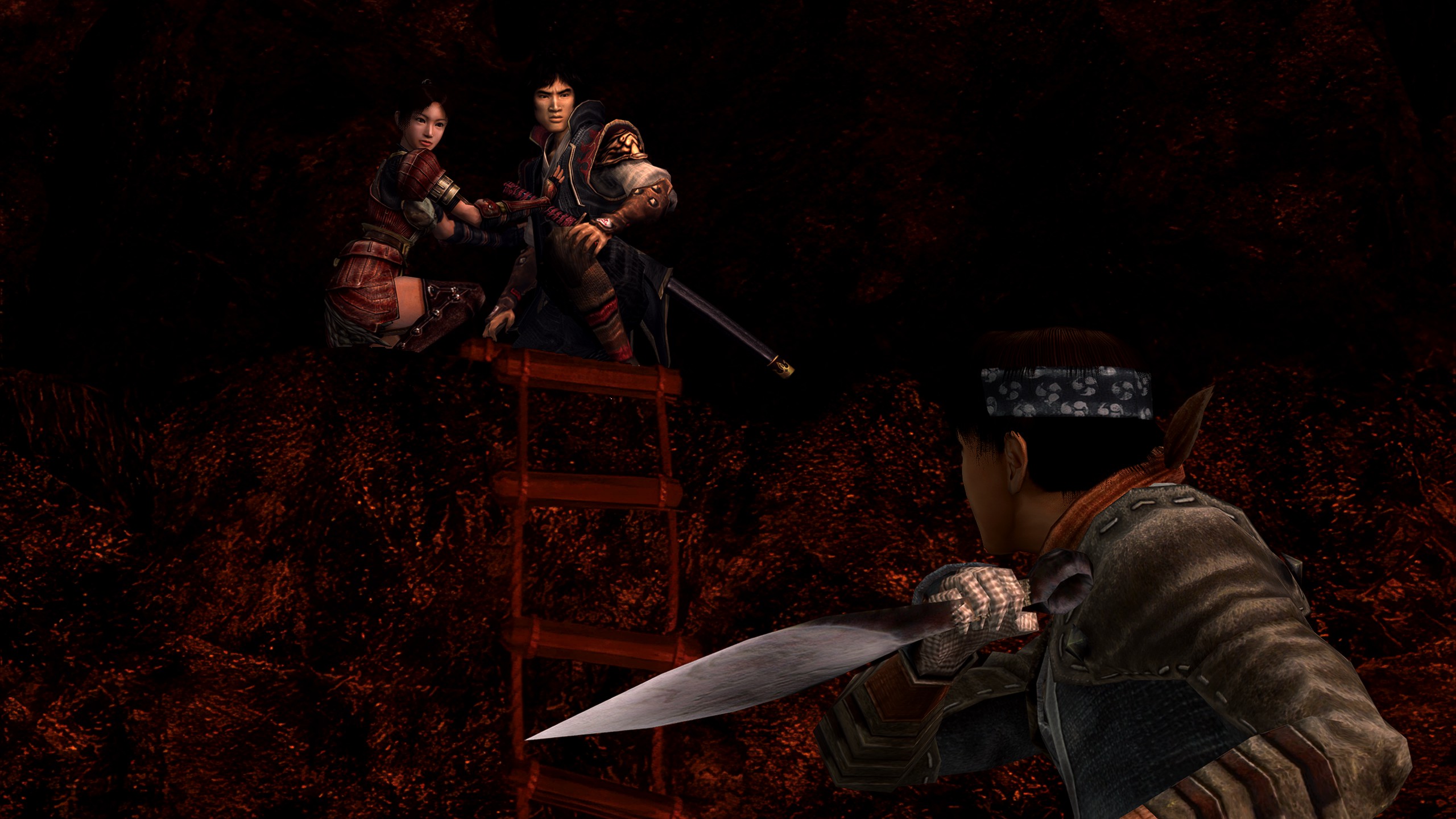
The setup for Onimusha 2 is as 2002 as the camera. You control Jubei, the lone survivor of a village massacred by a demon lord, on his quest for vengeance. Along the way he joins forces with a ragtag group of warriors and together they set out to destroy evil. It’s fine. It’s not like I need much of an excuse to go swing a sword, anyway, and this setup gets the job done well enough. But there are some antiquated story elements that had me cringing pretty hard, most of them centered around the lone female protagonist.
The first time you see Oyu—during the opening cutscene of the game—she is nude under a waterfall. The second time you see Oyu, she is being actively sexually harassed by townspeople. From there, Jubei spends a lot of time rescuing her from monsters and other perilous situations. Yet Oyu is framed as a strong warrior-type, a woman who takes no guff, but is in constant need of rescue. This inconsistent characterization felt ugly and left a bad taste in my mouth.
As I understand it, the original Onimusha was conceived by developer Capcom as a sort of “samurai Resident Evil,” which sounds amazing. I’ve loved that series since the first one. And you can certainly see the influence in the fixed camera angles and progress-gating puzzles. One of the main healing items is even an herb, for crying out loud. But Resident Evil was a deliberately slow-paced horror experience, a structure which was not made to accommodate action-heavy hack and slash combat. There’s an option to play Samurai’s Destiny using old school tank controls, too, but the idea of doing so chills me to the bone in an eldritch way.
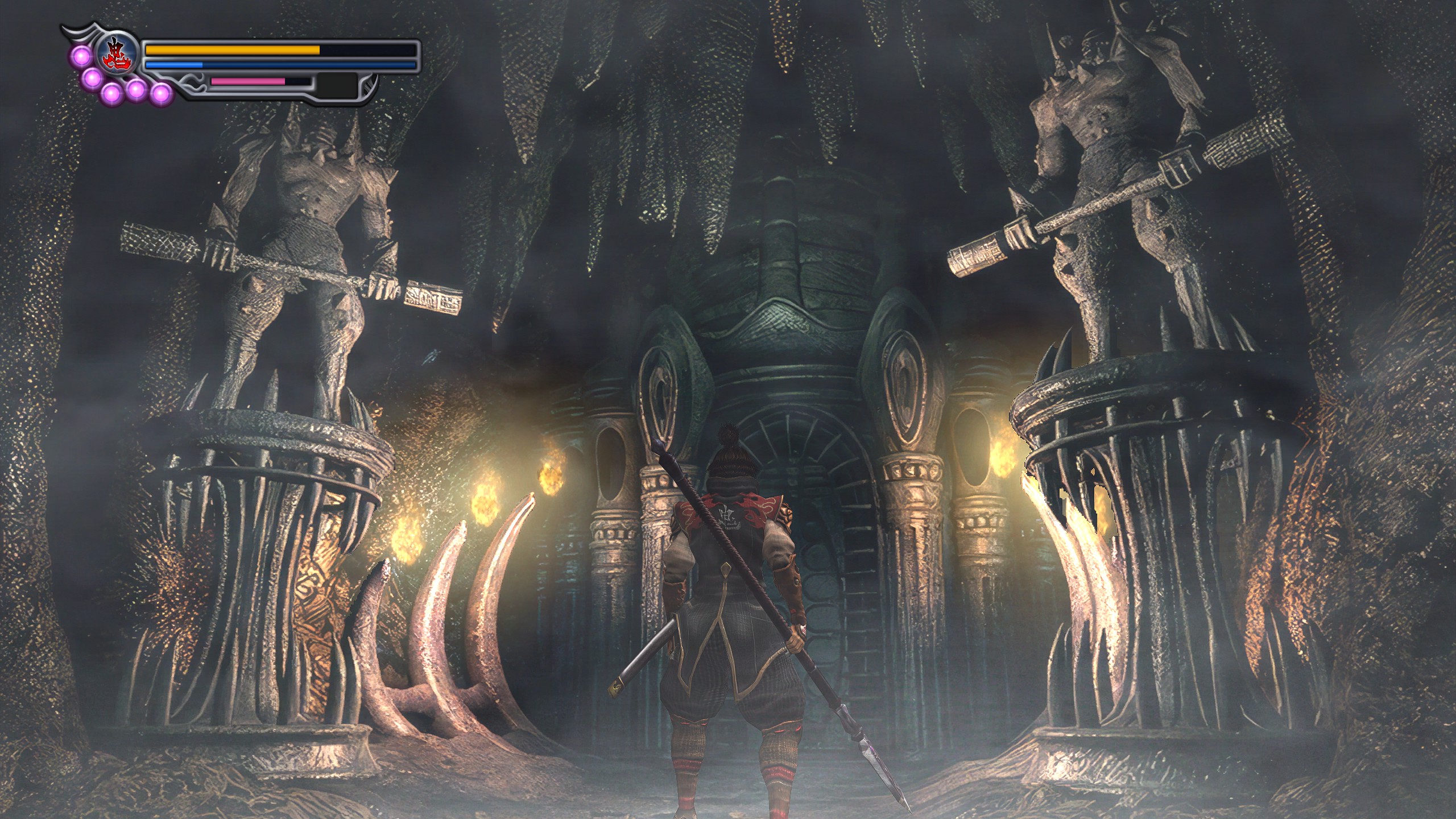
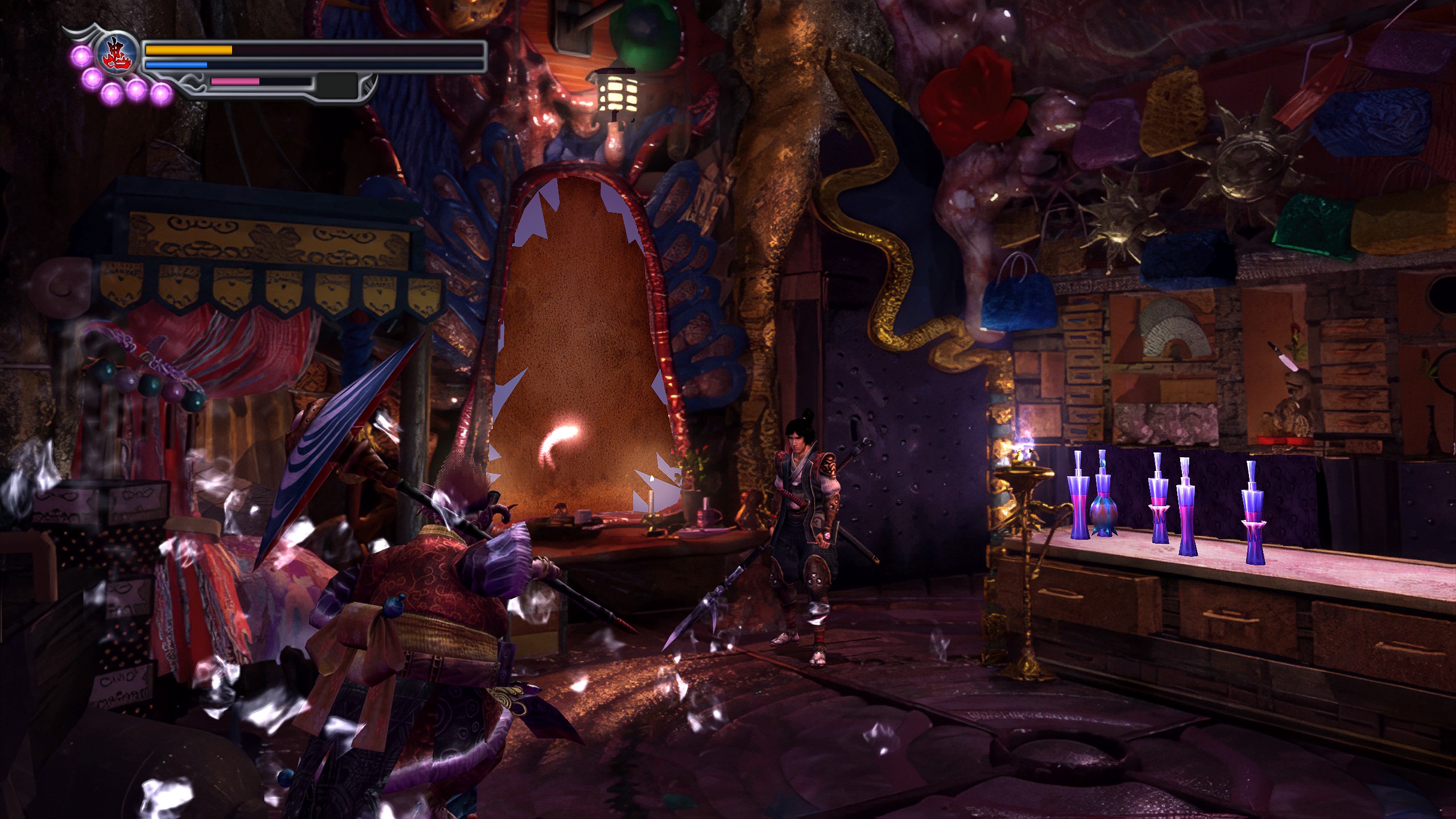
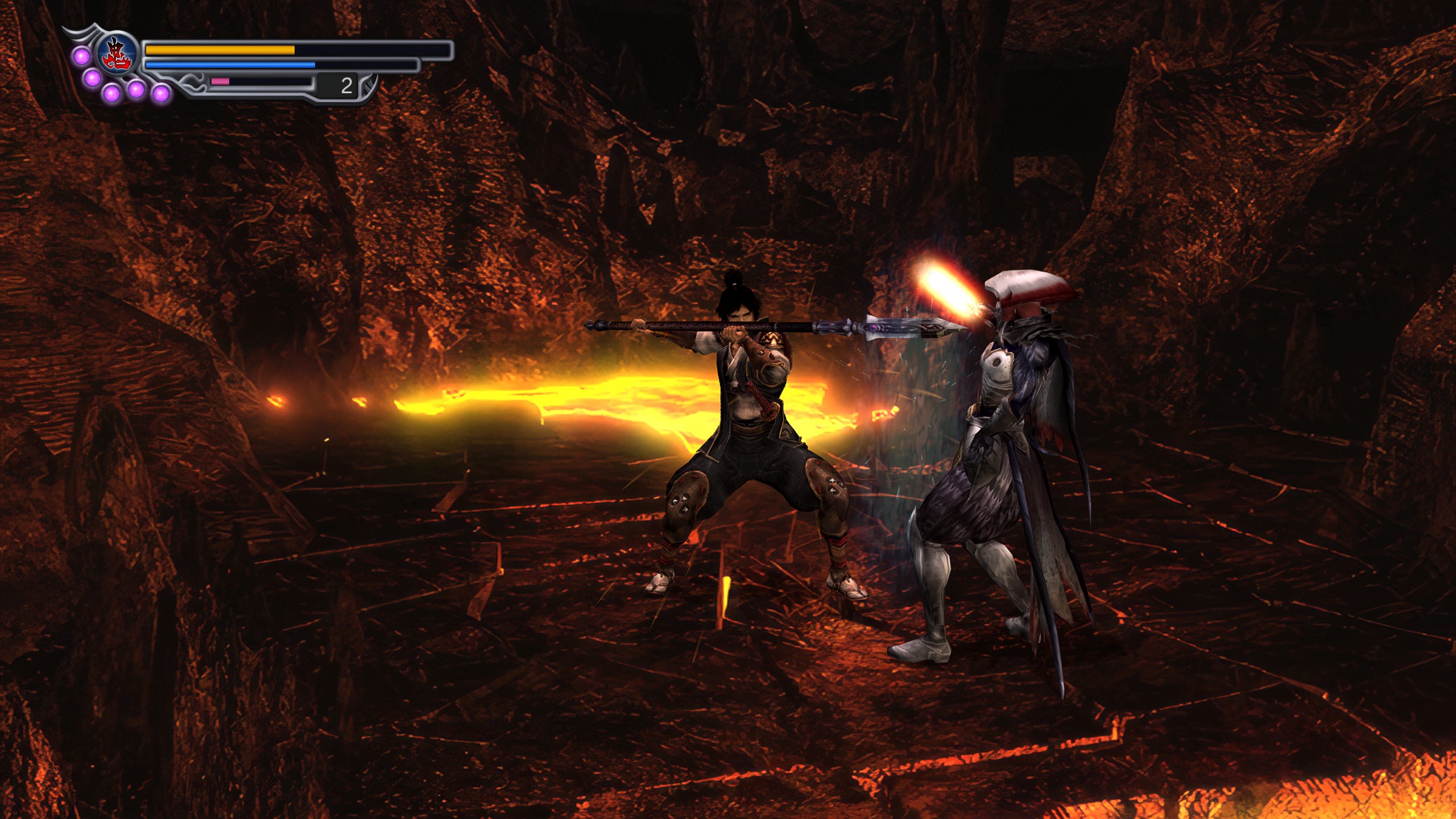
It’s easy to dunk on a decades-old game for its dated design, but there’s still a lot I liked about Onimusha 2, even if I was unaware there was a block button for the first hour or two. There’s a surprising amount of variety in combat thanks to the weapons Jubei acquires throughout the story. Each comes with a different set of attacks and its own special move. My favorite is the Hyoujin-Yari spear, which can freeze enemies, allowing you to shatter them with standard attacks. You can level up weapons by spending souls Jubei absorbs after defeating monsters, letting you focus on your preferred arms.
The game looks great, if a bit sterile thanks to the HD upscaling. Pre-rendered backgrounds tend to age well, as they have here. Environments show off a good deal of creativity and I was always excited to see what medieval Japanese castle or haunted forest I’d be exploring next. The side characters, too, inject a lot of personality into the story.
Throughout the campaign, Jubei can gift items to his allies which impacts who joins him on any given mission. You can even control them instead of Jubei if you get tired of him. This came in handy on more than one occasion when I took control of Magoichi, who saunters around with a rifle on his shoulder. Here’s a tip: ranged combat can trivialize some of Onimusha 2’s tougher encounters.
The enemy variety is also fun: New monsters are constantly being introduced, and they’ve all got their own attack patterns to learn. But Onimusha 2 likes to throw a ton of them at you all at once, and juggling melee attackers with off-screen ranged attackers had me threatening my PC with a trip to the landfill more than once. In many areas, monsters seemed to respawn indefinitely, too, stopping me from exploring when I wanted to.
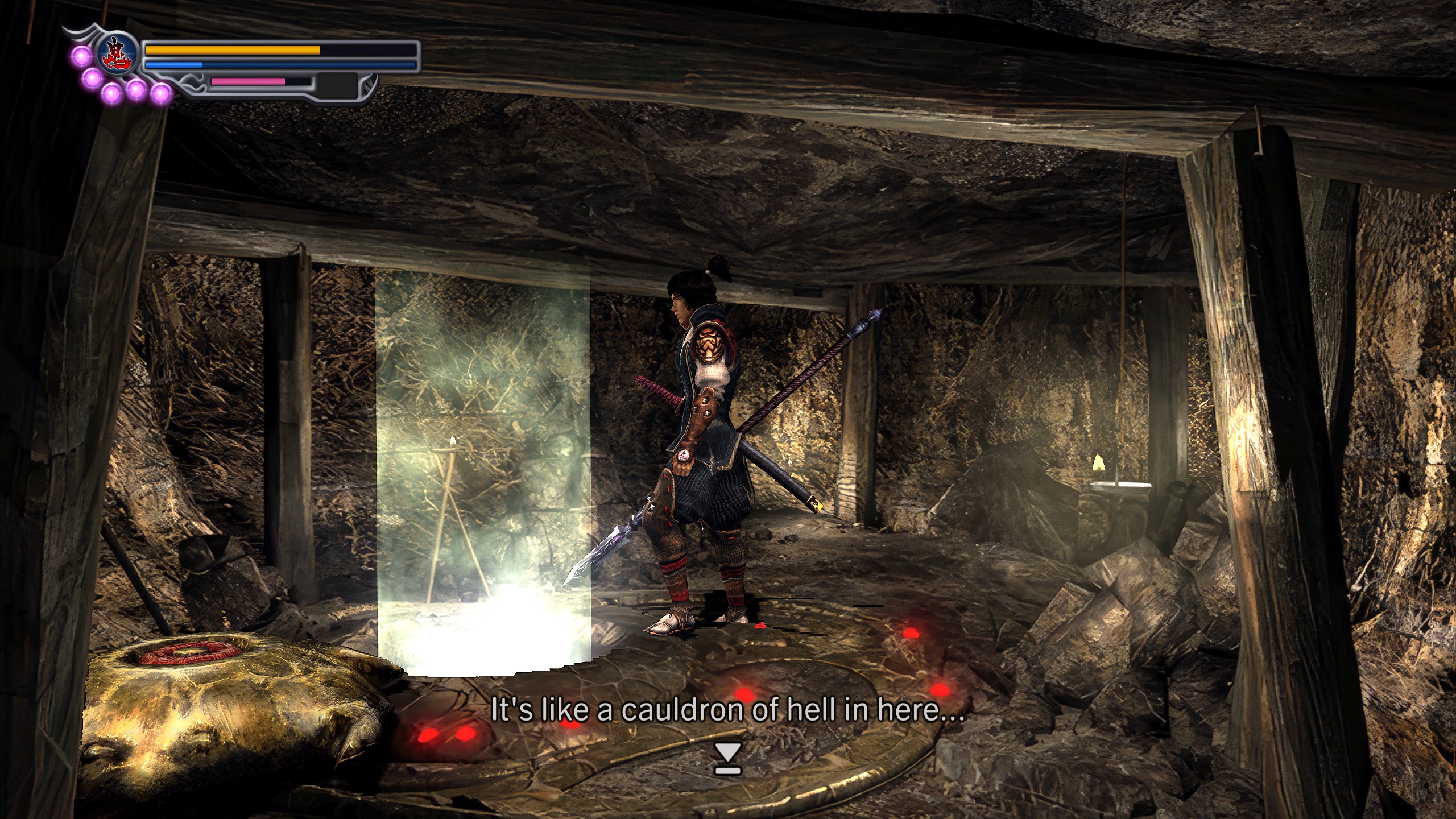
Combat would've been less frustrating if the default layout of any given stage wasn't “narrow passage and/or pathway,” clogged up the second a single monster appeared in my way. Onimusha 2 boasts more hallway fights than an entire season of Daredevil. At some point it graduated from rote to exasperating. Towards the end I was really yearning for the more wide-open arenas of modern action games.
If Capcom is hoping to drum up excitement for the recently announced Onimusha: Way of the Sword, I can’t imagine this rerelease attracting players new to the series—it didn't work on me. Nostalgia can be powerful enough to help us overlook shortcomings and reconnect with simpler times, when game design was not so wrought with expectation. I understand that you have to adjust your assumptions going into a 23-year-old game, and I gave Onimusha 2 a lot of grace. After all, I cut my teeth on the PS1 and PS2 generation of consoles.
But fond memories don’t necessarily translate to modern tastes. Perhaps sometimes, as one special boss fight suggested, the past is better off staying past.



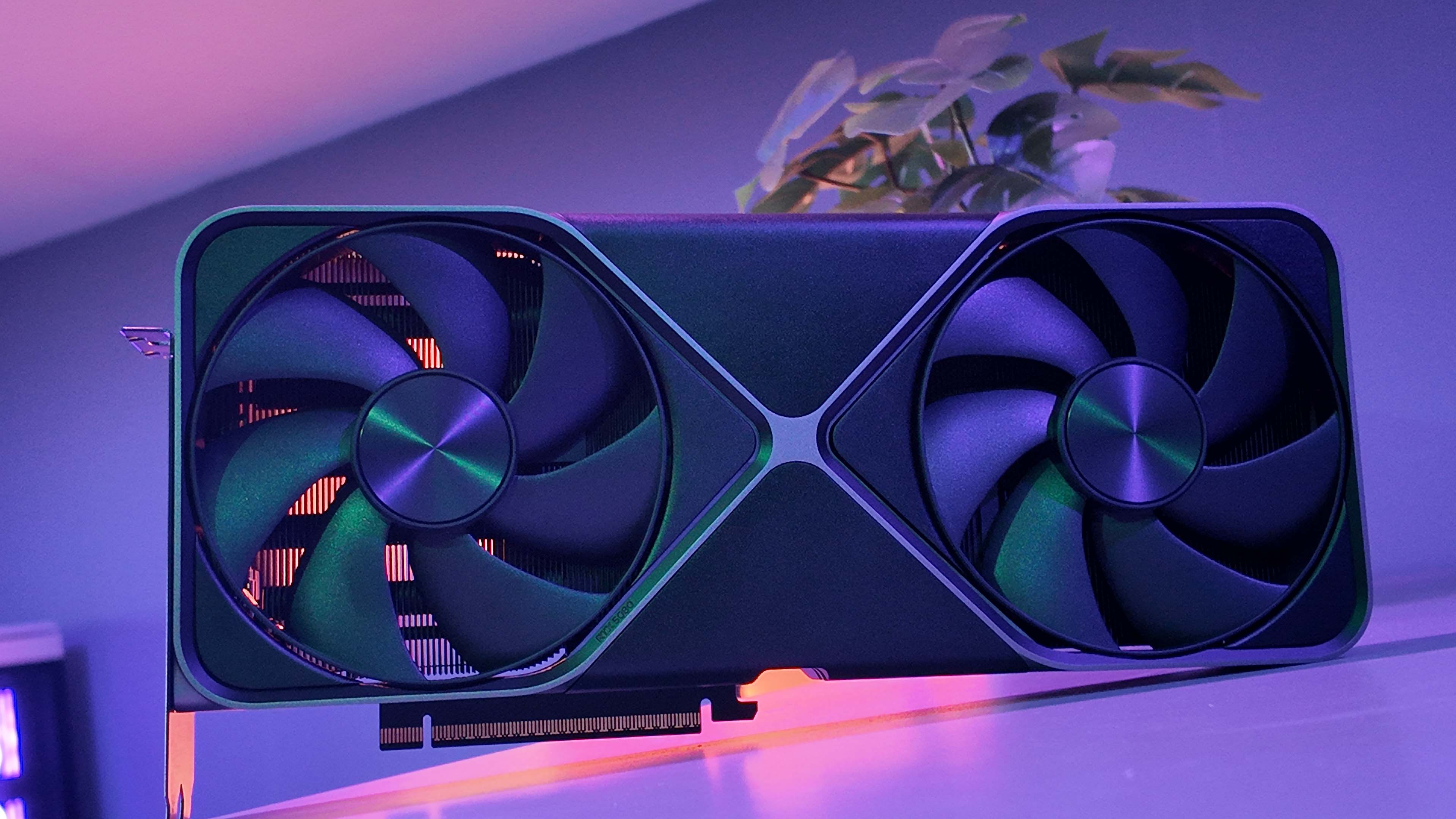
)




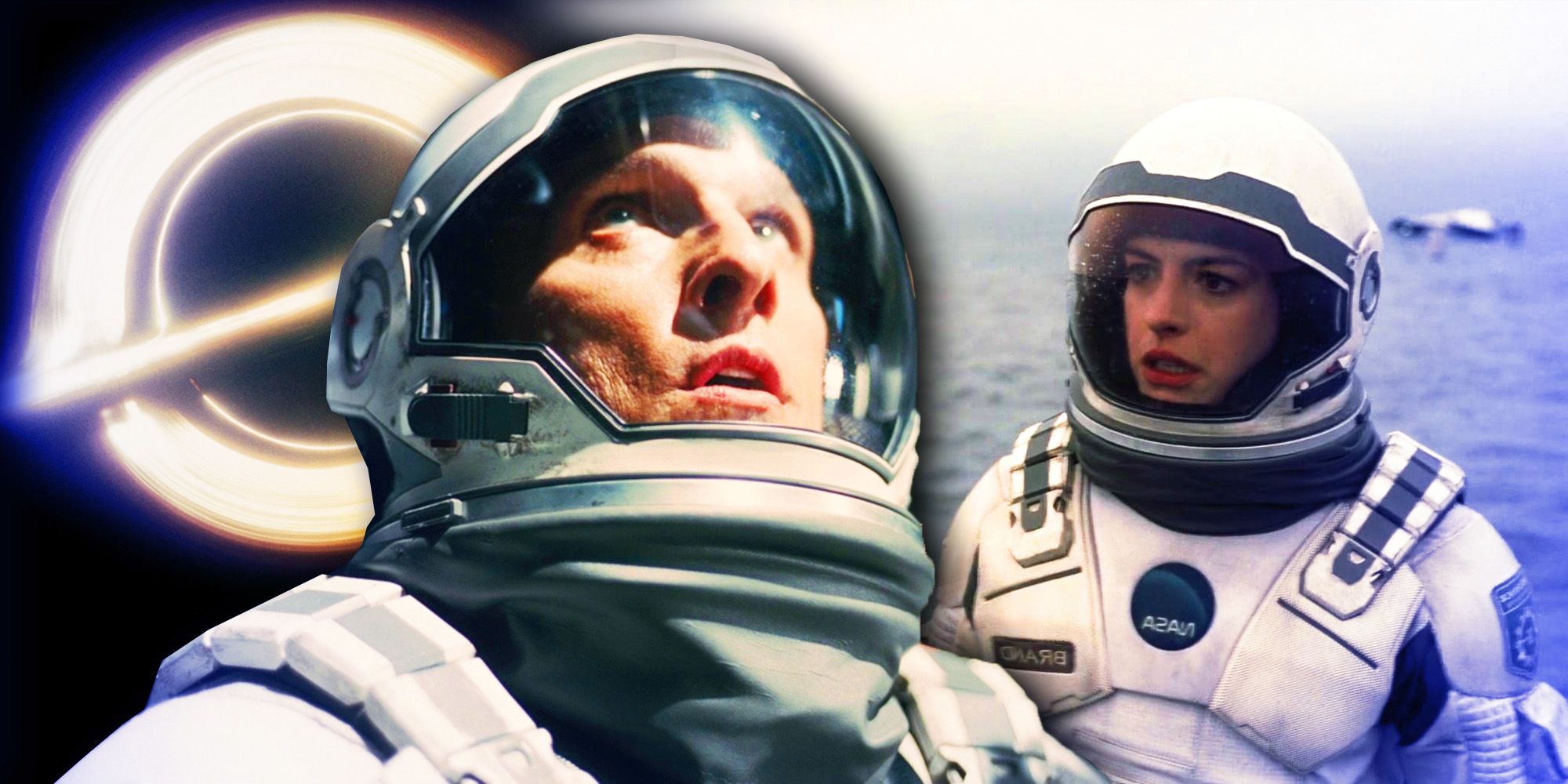



 Bengali (Bangladesh) ·
Bengali (Bangladesh) ·  English (United States) ·
English (United States) ·